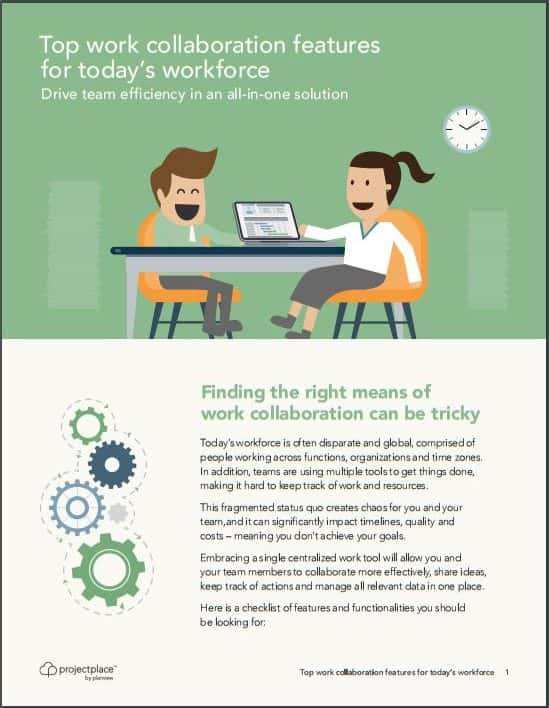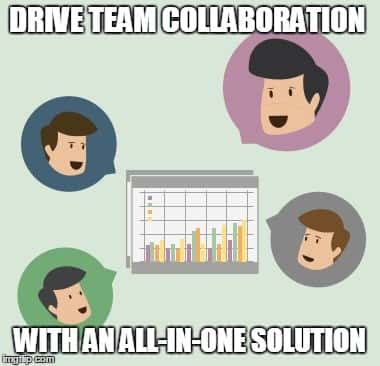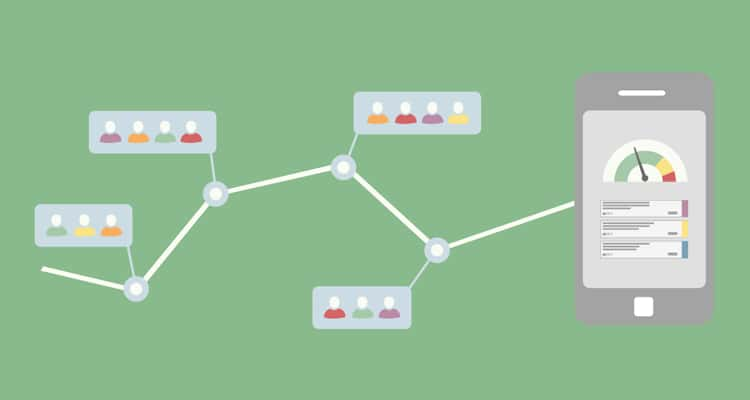
In a previous blog, “How to Get Rid of Chaos with Collaborative Work Management,” I feature a fun infographic that captures the day-in-the-life of Rob (an accidental project manager)—check it out if you haven’t seen it. I really like this infographic because it offers a relatable, before and after perspective to anyone who manages projects and shows how your day and your team’s day might transform for the better with an all-in-one collaboration solution.
The right collaboration solution allows you and your team to not only collaborate freely but plan, share ideas, keep track of progress, offer reporting, and enhance overall team efficiency and productivity. Are you intrigued?
This blog outlines the top features you need to consider when looking for a work collaboration solution. Let’s jump right in!
Top Collaboration Solution Features:
Team Collaboration: Workspaces and Kanban
An important feature of collaboration is the ability to track the team’s progress all in one place. For this reason, a work overview that summarizes all activities and assignments is very important. It keeps everyone informed and connected and allows the team to engage with one another and inquire about task progress.
You should always look for digital Kanban boards and cards. This allows everyone to gather necessary information to complete tasks all in one place. Individual cards should provide a description, name of the person responsible, information and estimated work effort and time, the date it is due, and any associated activity, documents, or files.
Planning and Execution: Connect the Plans and Tasks
Collaboration tools must also allow teams to plan their tasks effectively and execute them properly. Gantt charts allow managers to plan and help everyone to see the big picture, which allows you and your team to stay on top of goals and the steps of the process.
Also, look for a tool that can connect the Kanban boards to the Gantt charts, to streamline interaction. Workstreams allow you to add more cards straight to the plan, so you can visualize the smaller components before tackling the larger ones. The Kanban boards allow you to place cards into different columns, creating workstreams that are easy to follow and understand. This also results in increased accountability for the whole team.
Centralization and Security: Document Management
Having everything in one place increases the ease of collaboration. Through easier document sharing, you can better keep track of files and access them whenever and wherever you need them. This eliminates the need for sending documents and spreadsheets back and forth—you can upload the document where everyone can access them. With real time updates, everyone will be able to access the most up-to-date and current form. It is also beneficial if your collaboration solution can integrate with other workplace tools that you and your team use daily. Being able to sync to applications such as Google Drive or Dropbox at the click of a button can save everyone time. Also, the tool should support customer integrations for easier automation of workflow. While this centralization makes collaboration easier, you must also ensure that the tool has well-established security running throughout the organization.
Download your copy of the Top Work Collaboration Features for Today’s Workforce. If you are interested in learning more, stay tuned to the Planview Blog, or read the Survival Guide for Successful Collaborative Work Management. This provides tips and suggestions to efficiently drive collaboration.
Content contributor: Callie Gilmore




![Project Management Software: Chaotic Ways of Working [Video]](https://blog.planview.com/wp-content/uploads/2017/08/Chaotic-Ways-of-Working-2.jpg)

